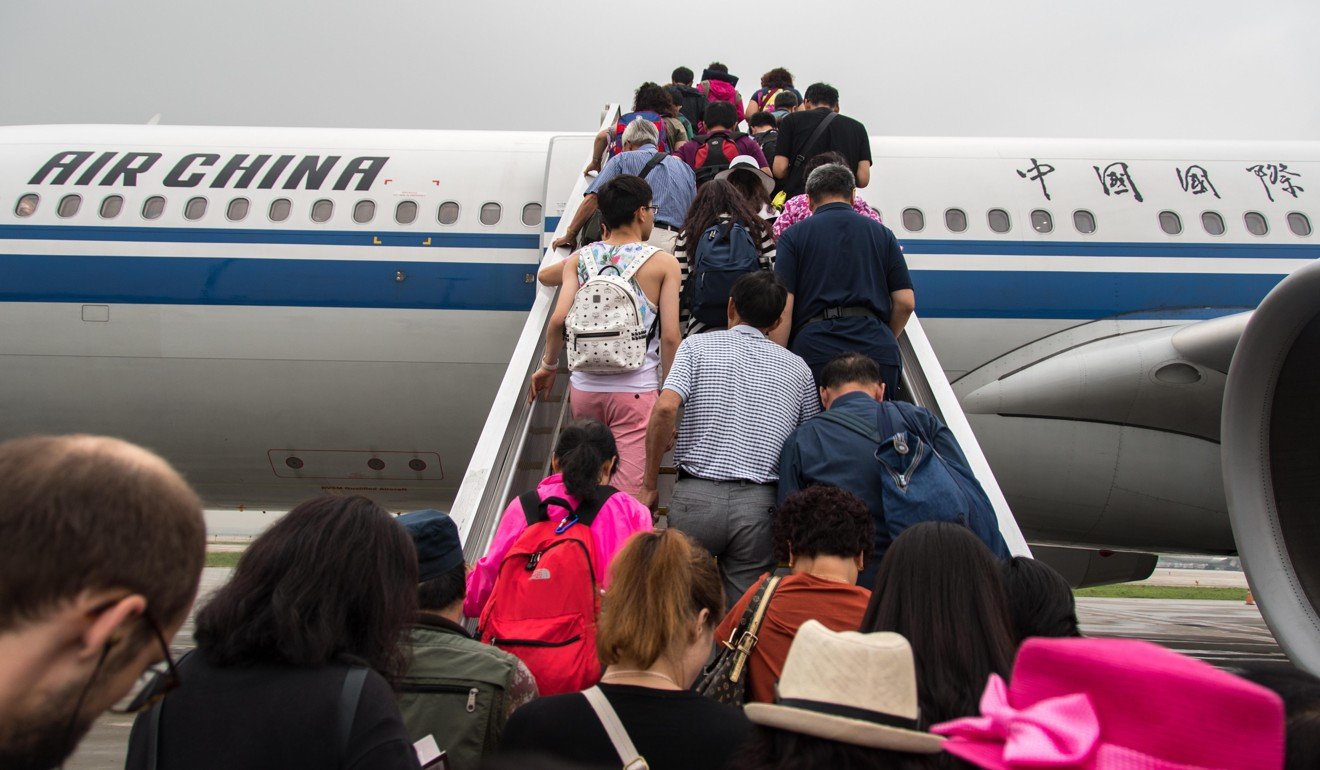
Where are Chinese tourists going if they’re giving protest-hit Hong Kong a miss?
- Singapore has emerged one of several big winners in Southeast Asia as mainland holidaymakers eye alternatives amid Hong Kong’s escalating violence
- However, with the US-China trade war pinching purses across the region, people might be travelling, but are they spending?
The Lion City’s tourism board said nearly 390,000 travellers from mainland China paid a visit in July this year, up almost 8 per cent from 361,019 visitors in July 2018. It was also a hefty 46 per cent jump on the figure for June this year, when 265,998 arrived.
Industry experts said there were always more Chinese tourists heading abroad in the summer to take advantage of the school holidays. But they added that Singapore was nevertheless among a number of Southeast Asian economies benefiting from a spike in mainlanders spurning Hong Kong as violent anti-government protests roil the city.
According to Hong Kong authorities, tourist arrivals dipped abruptly in July by 4.8 per cent compared to the same month in the previous year. The number of Chinese visitors fell 5.5 per cent to 4.16 million, down from the 4.4 million in July 2018.

Chua Hak Bin, senior economist at Maybank Kim Eng Research, said Chinese tourist arrivals had recently been “very strong” in Thailand despite a strong local currency making the country more expensive.
“Most of Southeast Asia appears to be benefiting from the diversion of tourists from Hong Kong,” Chua said.
For 21-year-old Wang Mengzhe, a Chinese student in London, choosing where to go on holiday this summer was as much about making a political statement as safety.
Singapore class on dissent ‘not training for Hong Kong-style protests’
Wang, who visited Bangkok and Hua Hin last month, has decided to stay away from Hong Kong, which he usually frequents religiously every year.
“The mainland people don’t want to contribute to the Hong Kong economy in any way,” Wang said.
“There is a general sentiment in China that they want to leave Hong Kong dry. They don’t want to create any income for Hongkongers, as they see them as ungrateful.”

Travel industry experts cited several reasons for the growing number of Chinese opting for Southeast Asian countries.
Michael Chiam, a senior lecturer in tourism at Singapore’s Ngee Ann Polytechnic, said: “Geopolitical issues do not crop up with these countries. Chinese, to some extent, follow what their government says, and for countries that are not friendly to them, they will not visit.”
Have Singaporeans misunderstood the nature of Hong Kong protests?
“The Chinese call them the Xin-Ma-Tai [using the first character in the Mandarin names of the three countries], and they are traditionally favourable destinations,” he said.
Wu, whose research focuses on China’s political economy, suggested Hong Kong had lost its appeal for the nation’s growing middle class looking for “high-end tourism”.

There was a 18.5 per cent spike in the number of mainlanders making their way to the casino hub in July compared to a year earlier, with the total for the month hitting just under 2.57 million.
Song Seng Wun, an economist at CIMB Private Banking, said: “They are not there just for the casinos. Macau has been doing a good job promoting integrated resorts and more wholesome family holidays.”
Song added that Chinese tourists and businesspeople would skip their Hong Kong trips if they felt it was not safe there, and cities such as Singapore would be the winners, even if they were pricey for the average mainland traveller.
Singapore will not escape economic impact if Hong Kong unrest persists: minister
Several major conferences and summits initially scheduled to take place in Hong Kong have either been postponed or moved in recent months.
The Global Wellness Summit, a health and beauty conference slated for mid-October, was relocated to the Lion City.
The Fairmont Singapore and Swissotel The Stamford have reported business groups checking into their hotels after opting to pass on planned visits to Hong Kong.
Added Song: “The more protracted and more violent [the protest movement] becomes, the less likely it is we are going to see arrivals in Hong Kong rebounding any time soon.”
The windfall for Southeast Asia would be considerable, analysts said.
“China is the single largest tourist source for most countries in our region ... I believe it makes up about a quarter of all international visitor arrivals in Singapore, Thailand, South Korea and Japan,” said Sin Harng Luh, an associate professor for the School of Tourism Management at Guangzhou’s Sun Yat-sen University.
Sin believed many countries had been planning for a surge in Chinese tourists regardless of the protests in Hong Kong.
Hong Kong tourism suffers worst downturn since Sars outbreak in 2003
“Tourist expenditure from China and Chinese investments in tourism infrastructure in Southeast Asian countries contribute greatly to our economies,” she said.
But for Singapore, where tourism makes up only about 4 per cent of gross domestic product, Song said the boost would barely make a difference.
It would be more significant for economies such as Thailand, where the tourism industry accounts for about 10 per cent of GDP growth, he argued.
However, Jeff Ng, chief economist for Asia at Continuum Economics, said any boom might be temporary as Chinese travellers started to feel the pinch from the bitter tariff dispute.
Ng said retail sales in China had dropped, especially in the luxury sector, of which he considered tourism a part.
“The arrivals numbers are one thing, but spending can be harder to gauge. There could be more Chinese visiting [Singapore] from the diversion [away from Hong Kong], but there could be less spending by them.”
Ngee Ann Polytechnic’s Chiam also felt the trade war would “slow tourism down”.
“If Chinese tourists have the money, they will still travel,” he said. “But most likely, if they do not have the money, they will take a domestic holiday, or simply stay home.”

